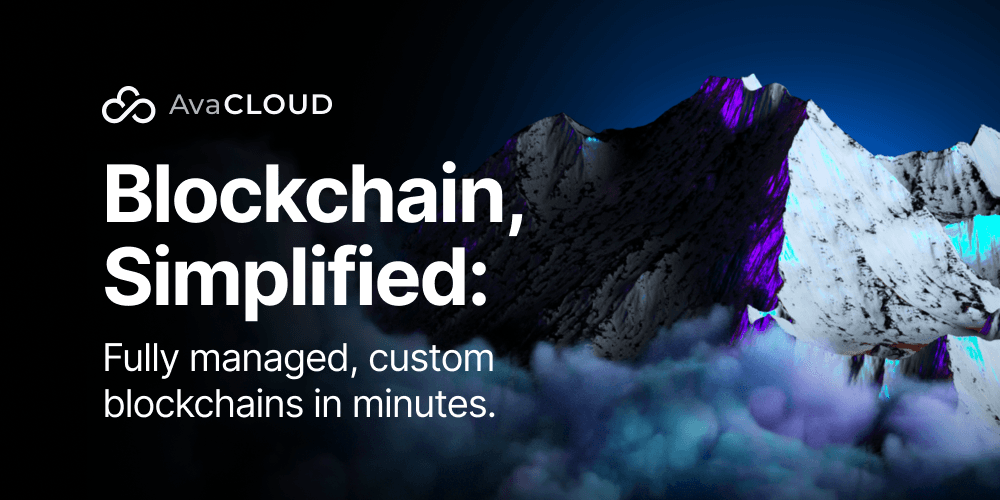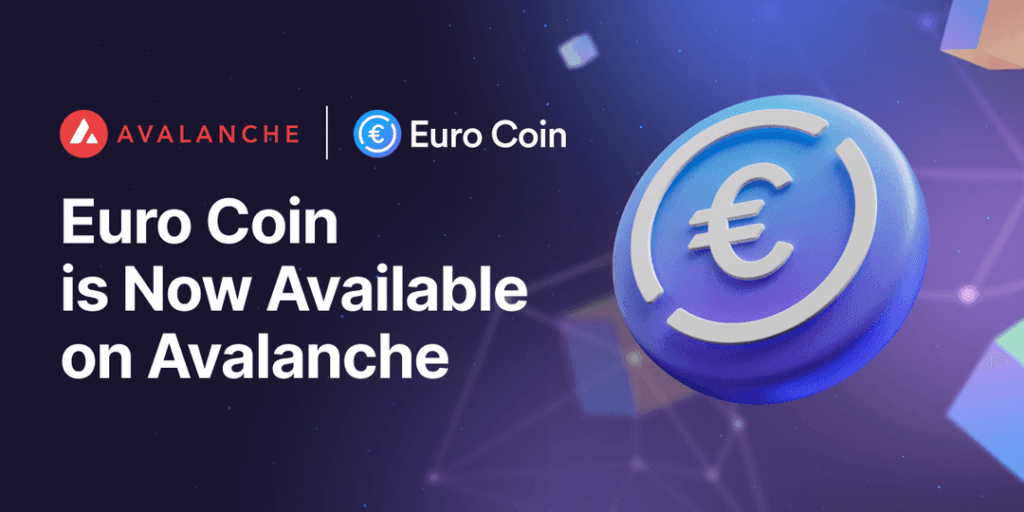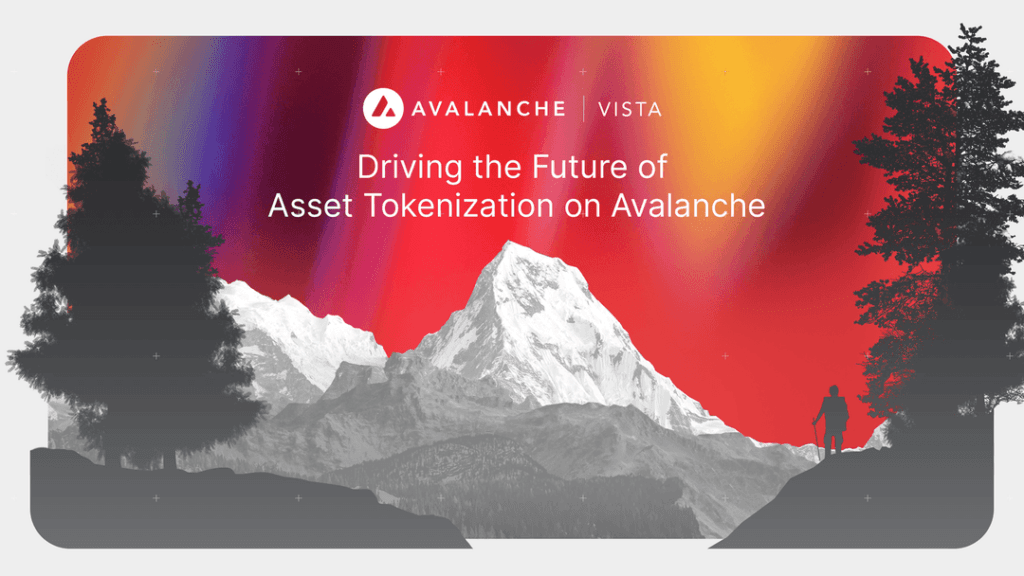On July 26th, 2023, The Tie hosted a call with Joshua Frank (The Tie CEO), Morgan Krupetsky (Director of Business Development: Institutions and Capital Markets at Ava Labs), and Luigi D’Onorio DeMeo (Head of DeFi at Ava Labs) to discuss the Avalanche blockchain network and its use cases, partnerships, and platform updates. Below we’ve recapped the highlights and key talking points from the call.
The Tie Webinars
[Recap] Avalanche Q3 2023 State of the Ecosystem
The call focused on the following topics:
- Background and Vision for Avalanche subnets
- User Growth Drivers in Q3
- Ava Cloud & Infrastructure Developments
- Institutions & Evergreen Subnets
- DeFi Initiatives & the Development of On-Chain Finance Infrastructure
- Gaming and NFT Adoption
You can catch the full replay here.
About Avalanche: the Subnet Vision
The emergence of a network of blockchains via proliferation of subnets has always been the long-term vision of the Avalanche platform. At its core, it is EVM-compatible but also VM-agnostic to support multiple virtual machines as it evolves. Avalanche brings two key technical differentiators:
- It uses an innovative consensus mechanism that enables sub-second transaction finality, meaning transactions are irreversibly confirmed in less than a second. This makes Avalanche well-suited for use cases like financial services requiring quick settlement.
- Avalanche supports the creation of custom subnets: application-specific blockchains with customizable parameters.
This subnet architecture aligns with Avalanche's vision of scaling horizontally through many specialized blockchains, rather than a single monolithic chain for all use cases. Subnets can be optimized for different performance, compliance, and customization needs across verticals such as finance, supply chain, and gaming. Importantly, subnets aren't siloed but can seamlessly interconnect for asset transfers and shared liquidity without costly bridging. The Avalanche mainnet went live with the C-Chain subnet in 2020. Since then, over 1300 validators have joined the network with capacity to eventually scale to millions as adoption grows.
Avalanche Achieved Significant User Growth in Q3

Avalanche has seen over 100,000 daily active wallets recently, indicating strong user adoption driven by the launch and traction of various DeFi protocols and applications. Notably, Avalanche has achieved consecutive all-time highs in monthly active users in both May and June. The introduction of concentrated liquidity features by decentralized exchanges like Trader Joe and the expansion of Uniswap V3 to Avalanche have both led to increased activity. Gaming applications like DeFi Kingdoms have also maintained steady user-bases throughout the bear market, showcasing the formation of engaged gaming communities.
Meanwhile, SK Group launched its loyalty token subnet, already on-boarding over 100,000 users who have claimed NFT loyalty passes. According to Luigi and Morgan, this diverse mix of DeFi, gaming, and enterprise adoption has been contributing to usage growth stemming from both retail and institutional sources.
Infrastructure Developments
The Launch of Ava Cloud
- As the learning curve for building blockchains becomes steeper, Ava Cloud provides managed blockchain infrastructure services for builders to mix-and-match for efficient deployment of customized subnets. This "menu" of options includes validator nodes, RPC endpoints, block explorers, messaging protocols.
- RPC endpoints that applications can query to interact with the subnet blockchain, (similar to Infura for Ethereum). These endpoints spare builders from having to run their own nodes
- Block explorers help to easily visualize and query blockchain data through a graphical interface. Ava Cloud builds and maintains explorers customized for each subnet.
- Messaging protocols like Avalanche Warp Messaging (AWM) and the Teleporter framework are offered to enable communication between subnets. This powers use cases like asset transfers and shared liquidity pools between subnets.
- By handling these complex infrastructure components, Ava Cloud allows builders to focus on their application logic and user experience. It fills the blockchain expertise gap for teams without deep technical knowledge. The service also modularizes setup, management, maintenance and updates for the core infrastructure underlying subnets.
- For enterprises, Ava Cloud can help provide access controls, permissioning, and regulatory compliance features.

Ava Cloud can be viewed as public infrastructure that others can build upon. However, Ava Cloud represents more of a focused product offering rather than an open-source tool. Via product offerings like Ava Cloud, Ava Labs aims to provide foundational building blocks and then welcome competition in the open market for collective improvement. There is a form on avacloud.io where interested builders can submit requests and contact information regarding integrations.
Teleporter
Teleporter is a framework built on top of Avalanche's native inter-subnet messaging protocol Avalanche Warp Messaging (AWM). AWM allows subnets to directly communicate with each other to transfer assets and data using cryptographic signatures, rather than having exposure to wrapped-assets risk relying on third-party bridges.
Teleporter makes it easy to leverage AWM for cross-subnet capabilities in a user-friendly way, akin to an SDK. It enables seamless transfers of tokens, NFTs, and other digital assets between subnets on Avalanche. Teleporter can also automate workflows through smart contract calls across subnets.
This unlocks a key benefit of Avalanche's subnet architecture - the ability to easily move assets between subnets and tap into liquidity pools on other subnets. For example, an application subnet can use Teleporter to let users transfer tokens to/from the C-chain, where most of Avalanche's DeFi activity resides. This avoids the need for custom token bridges or intermediaries to move assets between subnets. Teleporter is expected to accelerate adoption of subnets by making cross-subnet interoperability seamless for developers and users.
Institutional Adoption Efforts
At a high level, Evergreen Subnets are a framework for application-specific blockchain deployments tailored to institutions. Evergreen Subnets allow institutions to create customized blockchain environments that meet their specific needs around compliance, controls, and regulation while preserving the potential for interoperability and composability.
Via the Evergreen framework, institutions can customize their permissioning (transaction validating model) so that only approved parties can participate in the network. A custom gas token can be used for institutions that cannot hold volatile crypto assets. This enables use of a stable asset or even a valueless token to power transactions. Moreover, financial institutions can transact and communicate without third party bridges using the aforementioned AWM or Teleporter framework.

In Q3, Evergreen Subnets launched the Intain subnet and Spruce subnet:
- Intain deployed an Avalanche subnet that can enable on-chain administration and secondary trading of asset-backed securities in a regulated, compliant environment, showcasing financial use cases with customized controls.
- Spruce can be seen as a controlled testing environment for institutions to prototype on-chain finance applications with assets like equities and commodities. Spruce facilitates low-risk experimentation prior to full-scale adoption.
More production use cases are expected over the next 6-9 months as institutions progress from proof-of-concepts to live systems. Luigi expects that the main use-case drivers will be tokenization and unlocking the benefits of on-chain finance (OnFi).
DeFi Initiatives
New Euro-Pegged Stablecoins on Avalanche

Avalanche in Q3 welcomed 2 new native euro-pegged stablecoins - EURC by Circle and EURE, complying with MiCA (EU regulations). These stablecoins present a compelling option for those seeking alternatives to the USD-pegged counterparts in the crypto market. Beyond offering smoother fiat on/off ramping for the European market, EURC and EURE unlock new possibilities for payments and FX trading with euro-backed stability, reducing reliance on synthetic assets. EURC trading volume on Avalanche is 3-5x higher compared to Ethereum according to Luigi, driven by the advantages of cheaper transaction fees and faster settlement times. This example further solidifies Avalanche’s position as a premier blockchain platform for efficient and cost-effective trading, along with its growing ability to play the role of the “FX Chain”, as Luigi puts it.
On-chain Finance (OnFi) Infrastructure Continue to Develop
New protocols like Voltz, Struct Finance and Fractal demonstrate the focus on building institutional-grade products on Avalanche.
- Voltz offers on-chain Secured Overnight Financing Rate (SOFR) reference rates, which are a critical building block in traditional finance for interest rate swaps and other instruments. Bringing SOFR on-chain in a permissionless way expands DeFi's capabilities. Voltz is also available in the Spruce institutional testing environment, showcasing the bridge between centralized and on-chain finance
- Struct Finance offers tranched yield and fixed/variable yield products to investors, another institutional finance construct now ported on-chain.
- Fractal provides capabilities similar to an institutional prime brokerage, enabling optimized capital usage across DeFi protocols. Specifically, Fractal helps institutions like institutional investors, liquid token funds, VC funds, and market makers maximize their capital efficiency when utilizing different DeFi applications.
These protocols exemplify the trend of building on top of Avalanche's DeFi primitives to create products catering to institutional use cases.
Avalanche Vista Initiative
The Avalanche Foundation recently announced the Avalanche Vista initiative, an allocation of up to $50 million to purchase tokenized assets minted on the Avalanche blockchain. This initiative aims to spur growth in asset tokenization. The allocated funds will be used strategically to acquire tokenized assets that span stablecoins, financial assets, commodities, real estate, and more - helping to create new investible on-chain asset classes. The program selectively partners with protocols that are not just pursuing tokenization for its own sake, but thinking holistically about demand generation, distribution channels, and end-user adoption for their offerings.

Beyond bringing quality tokenized assets on-chain, Avalanche Vista also works to promote essential components like custody solutions and investor demand. The $50 million allocation is designed as a long-term, multi-year commitment rather than a short-term injection. Avalanche Vista represents one avenue for the Foundation to collaborate with protocols and foster further adoption of asset tokenization on Avalanche.
Gaming Subnets & GameFi Initiatives

There are several gaming focused subnets and projects in development, many expected to launch later this year and early next year:
- The TSM subnet plans to launch by the end of 2022. This will leverage Blitz, an existing gaming community app focused on titles like League of Legends, to encourage improving at those games through new incentive mechanisms
- Shrapnel - a blockchain-enabled first-person shooter game with AAA quality is targeting their launch in early 2023 with a dedicated subnet
- Off The Grid (OTG) - a AAA FPS game from Gunzilla Studio - expected to launch soon with in-game asset NFTs minted on an Avalanche subnet - GUNZ.
- Merit Circle is also building out the Beam subnet.
Morgan and Luigi emphasized that the overall trend they’re seeing is extensive experimentation with deployment of subnets for gaming use cases and customized performance.
SK Group Primed to Drive NFT Adoption

SK Group, a major South Korean conglomerate with over 20 million users, launched an NFT-based loyalty program on a customized subnet on Avalanche. This issues unique loyalty NFT "passes" to users which will enable earning and redeeming points when transacting at SK Group's services. So far, over 100,000 users have gone through KYC and claimed their loyalty-NFTs by interacting with SK's wallet. These 100k+ identified individuals represent growing mainstream adoption.
Over the next months, SK plans to launch the marketplace where the NFTs can be used to earn and trade points via spending at SK’s traditional businesses. With such a large existing user base, SK's NFT loyalty initiative can drive major mainstream adoption of blockchain and NFTs in South Korea. By leveraging the loyalty program from a brand they already use and trust, users are seamlessly brought on-chain and exposed to the benefits of blockchain technology and NFTs.
You can catch the full replay here.
Disclaimer: This report is for informational purposes only and is not investment or trading advice. The views and opinions expressed in this report are exclusively those of the author, and do not necessarily reflect the views or positions of The Tie Inc. The Author may be holding the token or using the strategies mentioned in this report. You are fully responsible for any decisions you make; The Tie Inc. is not liable for any loss or damage caused by reliance on information provided. For investment advice, please consult a registered investment advisor.
Sign up to receive an email when we release a new post
